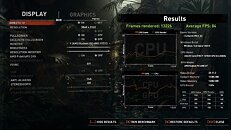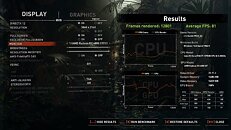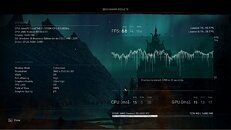Friday, December 4th 2020

ASRock Implements CAM (Clever Access Memory) on Intel Z490 Taichi Motherboard
ASRock has released a BIOS update for their Z490 Taichi motherboard which implements a Clever Access Memory (CAM) system (might I say that's as clever as it sounds?) CAM is basically ASRock's own marketing push based on AMD's SAM, which is in itself a marketing push based on PCIe's Resizable BAR feature (the amount of marketing names employed to describe the same set of features is becoming mind-boggling). The feature is available through the 1.72 BETA Bios for the Z490 Taichi motherboard, and WCCFTech ran some quick and dirty tests on a Z490-based system with an AMD Radeon RX 6800 XT graphics card to verify what (if any) performance differences arose.
The tests were done at 4K resolution for Shadows of the Tomb Raider and Assassin's Creed: Valhalla, running on an Intel Core i7-10700K processor and 2x 8 GB sticks of DDR4-2666 memory. The results? 3.32% performance improvement under Shadows of the Tomb Raider, and an impressive 11.54% improvement for Assassin's Creed: Valhalla (images to the left feature CAM on, and images on the right show CAM off). It seems it's only a matter of time until this amazing feature that's been available (yet untapped) for years now brings some very considerable and widespread performance improvements to users independent of platform. Kinda like finding a $10 bill in an old pair of jeans.
The tests were done at 4K resolution for Shadows of the Tomb Raider and Assassin's Creed: Valhalla, running on an Intel Core i7-10700K processor and 2x 8 GB sticks of DDR4-2666 memory. The results? 3.32% performance improvement under Shadows of the Tomb Raider, and an impressive 11.54% improvement for Assassin's Creed: Valhalla (images to the left feature CAM on, and images on the right show CAM off). It seems it's only a matter of time until this amazing feature that's been available (yet untapped) for years now brings some very considerable and widespread performance improvements to users independent of platform. Kinda like finding a $10 bill in an old pair of jeans.




32 Comments on ASRock Implements CAM (Clever Access Memory) on Intel Z490 Taichi Motherboard
SAM+CAM=SCAM ?
The turbo was actually designed for programs that coud'nt work with the faster CPU's back in that era. The program would just run beyond or simply too fast for us to understand lol.
Later the turbo was removed, because obviously, software started to use hardware timers and where not reliant anymore on just CPU speed.
Behind front panel:
duckduckgo.com/?q=jumper+configuration+for+turbo+486+case&t=ffab&ia=web
But this is a glass half full/half empty kind of problem, depends how you look at it. The true answer is the purpose of the button is to switch between two different speeds. If you pressed it once it made the computer run slower. You pressed it again, it made it run faster.
That should be, in an old pair of jeans. ;)
I wonder 4K vs 3440 x 1440 @144Hz which one is more taxing on the graphic card?
I had a 486 PC that ran at 66 MHz when the Turbo was "on" and 33 MHz when it was "off".
There was even a display that showed as 33 or 66.
So for my PC, Turbo"On" equaled the full speed.
Just like it states here:
What Was the Turbo Button on Old PCs for? | ITIGIC
Controllable universal memory
Let's say both displays support 144Hz, one is 4K, the other is 3440x1440, and your target is to achieve 144 FPS on both. Obviously, in that case the 4K will be more taxing, since it has more pixels and the video card will have to work more to render those additional pixels at 4K.
However, if you are happy with less FPS at 4K, and/or you have a 4K monitor that can't do 144 Hz, then it depends. Most likely somewhere around 80 FPS the 4K will use about the same resources as the 3440 x 1440 @ 144 FPS, since the number of pixels per second that needs to be rendered will be about the same.
Of course, there are additional overheads that do not depend on the number of pixels per second, so you can't just multiply the 3 numbers (horizontal pixels x vertical pixels x FPS) to get the relative load, but it's good enough for a back of the envelope calculation. If you want exact numbers, nothing can replace actual testing.
Z390 asrock users wanted here for bios mod testing:
www.techpowerup.com/forums/threads/z390-taichi-asrock-board-users-resized-bar-bioses-available-for-testing-z390-taichi-featured-pm-me-for-details.275587/